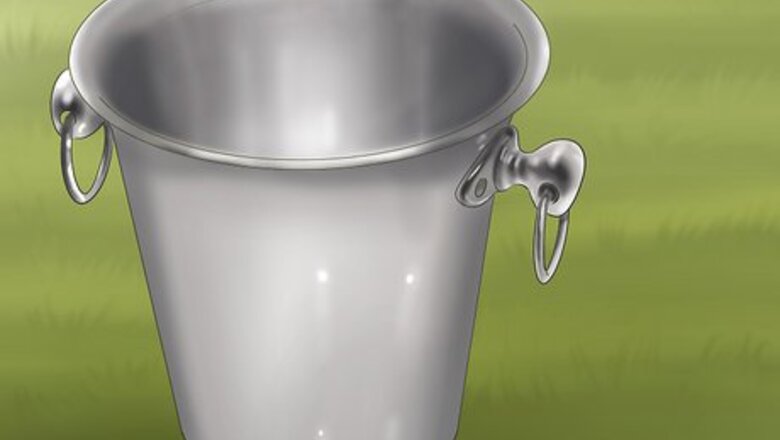
views
Preparing the Milking Station
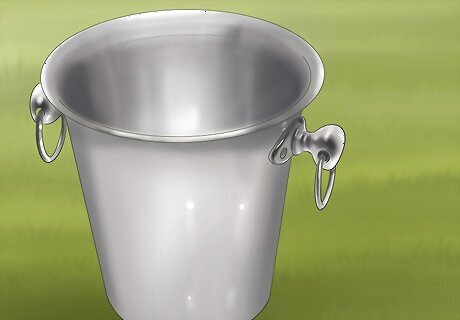
Sanitize everything that you will be using. All equipment and utensils should be thoroughly washed in water between 100-120 degrees Fahrenheit (37.8-48.9 degrees Celsius), using an alkaline-based or chlorinated cleaner. This is to prevent the growth and spread of bacteria. It is best to sanitize equipment 30 minutes or fewer before use.
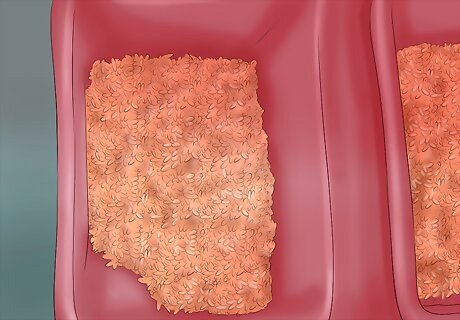
Prepare a grain bucket. Use one pound or less of grain in the feed bucket, as any more grain may cause bloating.
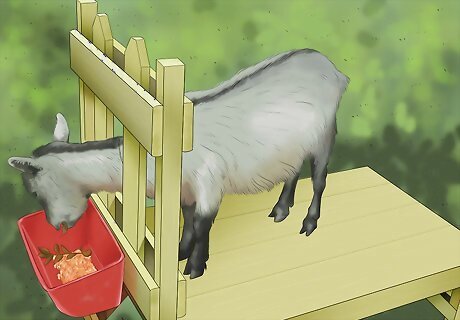
Lead your goat to the milking stand. Put a little feed in place and she will put her head through the stanchion. Once she does that, clip it closed. The stanchion should be comfortably loose, but not so loose as to allow her to slip her head back through once closed. If you get your goat used to the routine, it will easily come up and jump onto the stanchion.
Preparing the Goat
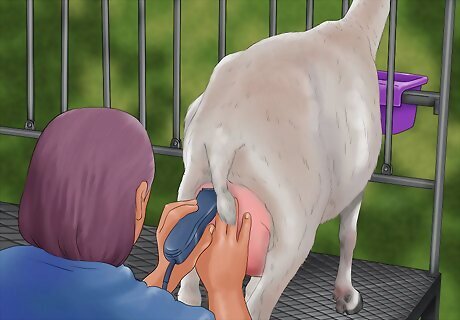
Shave the udder. This will prevent dirt and grit from falling into the milk, which is crucial to keeping the milk clean and safe.
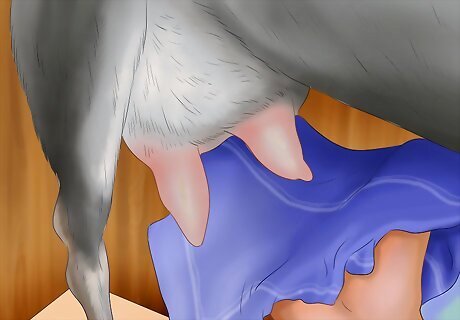
Wash down the udder and teats. Using a sterilized cloth and warm water, wring out the cloth so it's not soaking wet and wipe down the teats thoroughly. Using warm water is important because it relaxes the goat and helps with milk letdown. You should also gently massage the teats and udder while wiping them clean. Udder massage induces the release of oxytocin, which triggers milk letdown in lactating farm animals.
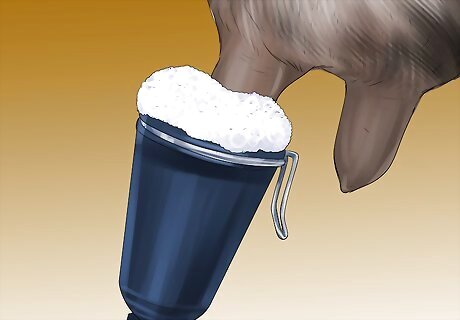
Use a pre-dip on the teats. Pre-dip products kill bacteria without drying out the teats, and should be left on for a minimum of 30 seconds. Some farmers prefer pre-dip instead of washing because the pre-dip does not create a warm, wet environment like washing does, which is conducive to bacterial growth.
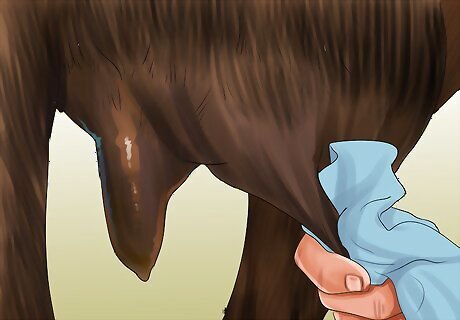
Use single-use paper towels to wash/dry teats. And be sure to wash your hands thoroughly before milking each goat. This step is important to minimize the risk of spreading mastitis bacteria from infected goats to healthy goats. It may be helpful to wear disposable gloves while milking each goat to further reduce the risk of infection.
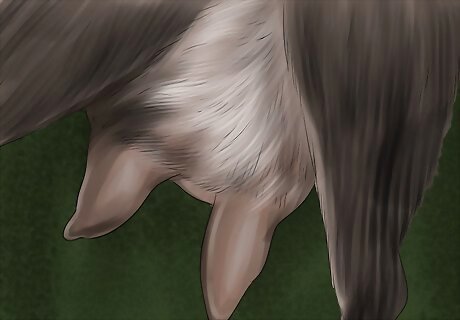
Inspect the teats for mastitis. Look for redness, swelling, heat, and signs of pain, as well as abnormal milk secretions during milking.
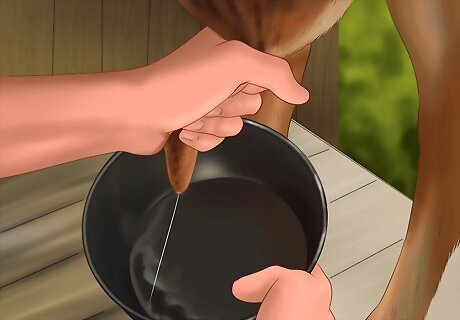
Begin milking within 60-120 seconds of teat preparation. This is to capitalize on your goat's optimal milk let-down time.
Milking the Goat
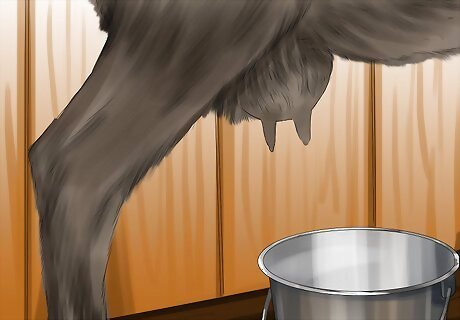
Place the bucket on the stand. Position the milking pail so that it is centered in line with the direction of spray from the goat's teats.
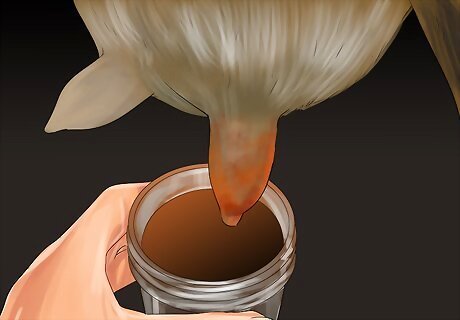
Dip, strip, and wipe. Dip the teat in an iodine solution if you have not already used a pre-dip. Then squeeze out the goat's first milk stream, which is the most likely stream to contain bacteria. Then wipe with a clean, disposable paper towel, and begin milking as normal. Use a strip cup to collect the first milk stream. Your strip cup should have a black screen across the top to collect any irregular flakes or clots so that you can detect these irregularities quickly.
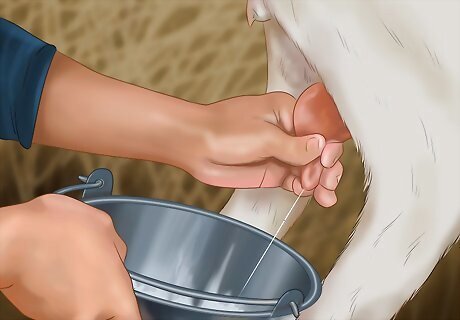
Wrap your thumb and forefinger around the base of the teat. Keep your grip firm but not too tight. Just apply enough pressure to trap the milk inside the teat.
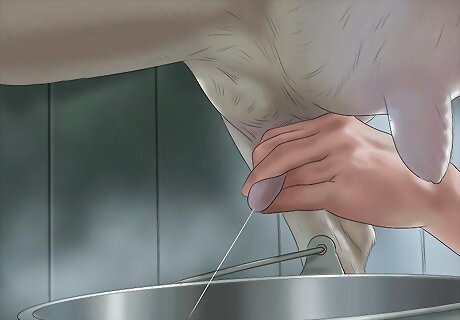
Squeeze with your middle finger, then your ring finger, and then your pinky, in one smooth, successive motion, top-down, from udder to teat. Remember to keep your grip tight on the base of the teat, or else instead of going into the bucket, the milk will slip right back up into the udder, which may cause infection. Don't pull on the teat! This will hurt the goat, and it may damage the teat.
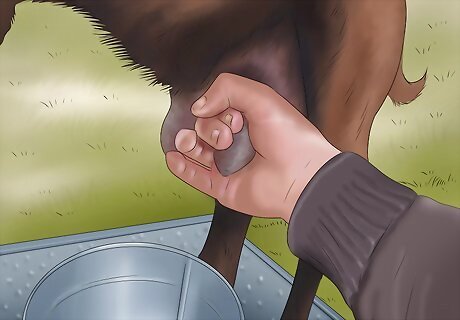
Understand what works best for your goat. Every goat is different. Different goats will have different sized and shaped teats, so if your hands are bigger than the teats you may have to learn to use fewer fingers.
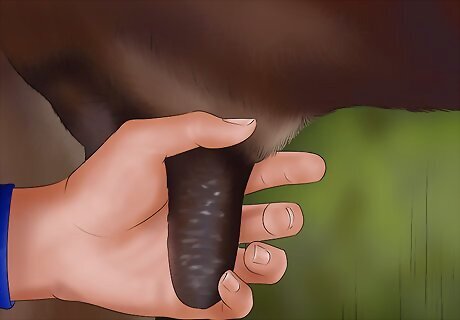
Relax your grip on the base of the teat to allow milk to refill the teat.
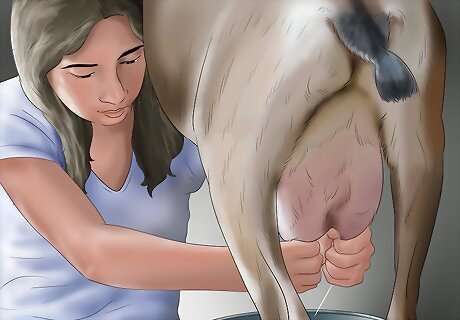
Repeat steps 6-8, with one hand on each teat. Alternate, with one teat being squeezed while the other teat refills. With practice, you will find an efficient rhythm.
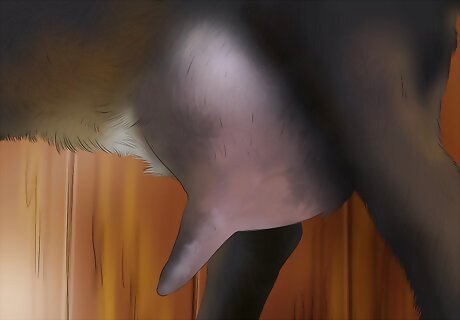
Stop when you see that there isn't much milk left. The teats will be flaccid, with almost a "deflated" appearance. Massage the udder to release the remaining milk. You should get another 4-8 ounces, but do not try to wring out every last drop.
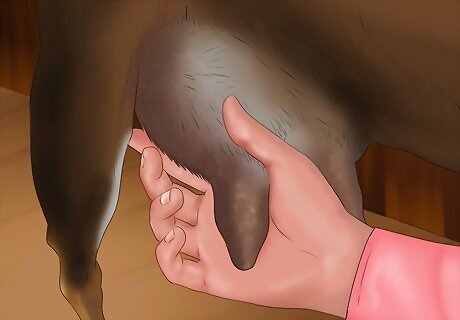
Massage the teats after milking. This can help prevent bacterial growth after the milking process has finished.
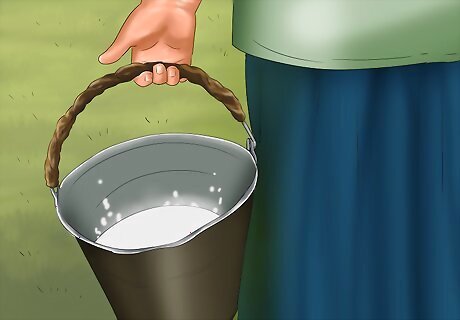
Take the bucket away, and put it somewhere that it won't get knocked over by a curious or oblivious goat. Milk should be refrigerated down to 40 degrees Fahrenheit (4.4 degrees Celsius) or cooler within two hours of milking.
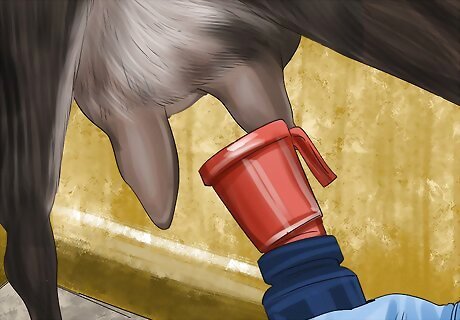
Use a teat dip (iodine solution) after you are done milking. This will keep bacteria from infecting the teats after the milking process.
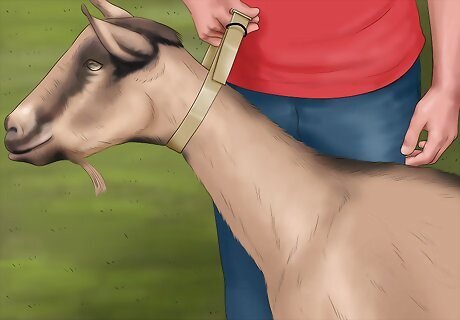
Grab the goat's collar (or attach a leash) and unclip the stanchion.
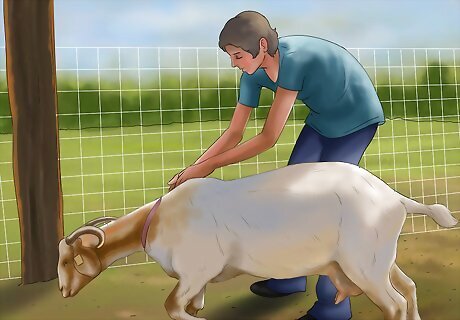
Lead your goat back to her pen. Be sure that your goat has enough water, as goats can become dehydrated during the milking process. Make sure that your goat is getting enough nutrients. Remember, a high-producing goat will need plenty of hay throughout the day and around one pound of grain for each three pounds of milk she's producing. Ensuring that your goats have adequate food and water is always important, but it is especially crucial during milking periods. Meeting these needs will keep your goats happy and healthy.


















Comments
0 comment